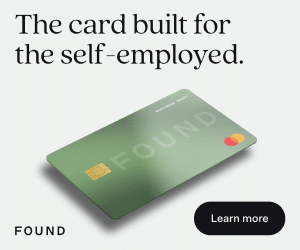So you’ve decided to embark on the life changing journey to become a freelance web designer, good on you! Freelancing as a web designer comes with a sense of freedom and creativity that few other professions can match, it’s where I started before I expanded my team and built my agency. Looking back, I wish I’d been able to read this article so I could avoid the traps many freelance web designers fall into that make it not only less profitable but also less enjoyable.
In this article, I’m going to dive into the top 10 mistakes I see freelance web designers make and, more importantly, how to avoid them.
1. Skipping Contracts
One of the most common mistakes freelancers make is starting projects without a formal contract. This decision usually stems from eagerness to land clients or a belief that a verbal agreement will suffice. However, skipping a contract can lead to serious issues like scope creep, payment disputes, or unclear expectations.

Get Weekly Freelance Gigs via Email
Enter your freelancing address and we’ll send you a FREE curated list of freelance jobs in your top category every week.
How to Avoid It: Always have a detailed, written contract in place before starting any project. The contract should outline the web design project scope, deliverables, timelines, payment terms, and what happens in the event of changes or cancellations. Tools like HelloSign or Adobe Sign can make contract management seamless.
2. Not Defining Project Scope Clearly
Ambiguity in project scope often leads to “scope creep,” where clients expect more work than was initially agreed upon. This not only strains your time but can also damage the client relationship.
How to Avoid It: At the project’s onset, document every detail of the scope—including the number of revisions, deliverables, and timelines. Communicate any additional costs for out-of-scope requests to set clear expectations.
It’s also important to address scope variance immediately. If a client requests something that wasn’t included in the initial scope, perhaps say something like “that’s definitely possible, however our initial scope only covers XYZ. Would you like me to scope that and come back to you with a price for the additional work?”.
3. Underpricing Services
Many new freelance web designers undervalue their work, often out of fear of losing clients or in an attempt to onboard their first clients at the beginning of their freelance career. While this might attract some clients, it can lead to burnout and financial instability.
How to Avoid It: Research industry standards and set competitive rates that reflect your expertise, tools, and time investment. Consider offering tiered packages to appeal to different budgets while still valuing your skills.
I also think it is invaluable for freelancers to learn how to sell. Take a sales course or watch some Youtube videos that teach you how reinforce the value of the client investing in your services. Often a fear-based approach can be very effective in sales, so I’ll often advise clients to avoid the cheap option because “we all know how that usually plays out”.
[POTENTIAL VIDEO EMBED] – https://www.youtube.com/watch?v=RUSMSyT0SWU
<iframe width=”560″ height=”315″ src=”https://www.youtube.com/embed/RUSMSyT0SWU?si=LE6wCm_cINyAIUKK” title=”YouTube video player” frameborder=”0″ allow=”accelerometer; autoplay; clipboard-write; encrypted-media; gyroscope; picture-in-picture; web-share” referrerpolicy=”strict-origin-when-cross-origin” allowfullscreen></iframe>
4. Taking on Every Client
The allure of having a steady stream of work can make freelancers say “yes” to every opportunity. However, not all clients or projects will be a good fit, and taking on the wrong ones can lead to frustration and unfulfilling work.
How to Avoid It: Be selective. Evaluate potential clients based on their goals, budgets, and how well they align with your skills and values. Don’t hesitate to say “no” when a project doesn’t feel right.
5. Ignoring Client Red Flags
Sometimes, the signs of a problematic client are there from the beginning. Unrealistic demands, reluctance to sign a contract, or excessive haggling over prices or delays in paying required deposits are all red flags in my opinion.
How to Avoid It: Trust your instincts and learn to spot red flags. Set boundaries early, and if a client raises multiple concerns, it’s better to walk away before issues escalate. A big part of working for yourself is learning to deal with conflict but it’s better to have a small potential conflict in telling a client you don’t think they’re the right fit for you than having to deal with ongoing conflicts due to not being aligned from the outset.
6. Poor Communication Skills
Communication is key in freelancing. Misunderstandings, delayed responses, or vague updates can frustrate clients and damage your reputation.
How to Avoid It: Maintain professional and prompt communication throughout the project. Use project management tools like Trello, Asana, or Slack to keep clients updated on progress. Active listening is also crucial to understanding client needs.

7. Failing to Update Your Portfolio
We’ve all been guilty of not updating our own showcase portfolio. An outdated portfolio can make you appear less competent or behind the times. Clients want to see recent examples of your work that reflect your current skills.
How to Avoid It: Set a monthly task to review what you’ve been working on and update your portfolio with your best and most recent projects. Highlight a variety of styles and functionalities to showcase your versatility. Platforms like Behance or a personal website can help you maintain a professional online presence.
8. Not Setting Boundaries
Freelancers often feel pressured to be available 24/7 to satisfy clients. This can lead to burnout and unrealistic client expectations.
How to Avoid It: Establish clear working hours and communicate them to your clients from the beginning. Use tools like email scheduling or “do not disturb” modes to enforce boundaries without compromising professionalism.
9. Overcommitting and Missing Deadlines
One of the most common mistakes for newbie freelancers is to overpromise and underdeliver. Taking on too many projects at once can stretch your resources thin, resulting in missed deadlines or subpar work.
How to Avoid It: Be realistic about your capacity. Use scheduling tools like Google Calendar or Monday.com to manage your workload effectively. If you’re overwhelmed, communicate with clients early and negotiate new deadlines if necessary.

10. Neglecting Professional Development
Web design trends, tools, and technologies evolve rapidly. If you’re not constantly upskilling you’re going to get left in the dust by your competitors.
How to Avoid It: Dedicate time for continuous learning. Follow industry blogs, take online courses, and experiment with new tools. Platforms like Coursera, Udemy, and LinkedIn Learning offer courses tailored to web design professionals.
Bonus Tips for Success
Beyond avoiding these common mistakes, here are a few additional tips to thrive as a freelance web designer:
- Network Regularly: Attend industry events or join online communities to connect with potential clients and peers.
- Build Passive Income Streams: Consider selling website templates, plugins, or other digital products to diversify your income.
- Ask for Feedback: Constructive feedback from clients can help you refine your skills and improve your services.
- Invest in Tools: High-quality tools can boost your efficiency and output. Whether it’s design software, project management tools, or invoicing systems, don’t hesitate to invest in your business.
Final Thoughts
Freelancing as a web designer can be incredibly rewarding, both from a personal validation perspective but also financially. To be successful it requires careful planning, discipline, and a willingness to learn from mistakes. By recognising potential problems as soon as they arise and avoiding the common pitfalls I’ve outlined above, you’ll not only grow your skills but also build a reputation that attracts high-quality clients. Remember, every mistake is a lesson—use them as stepping stones towards building a thriving freelance career.

Keep the conversation going…
Over 10,000 of us are having daily conversations over in our free Facebook group and we’d love to see you there. Join us!

